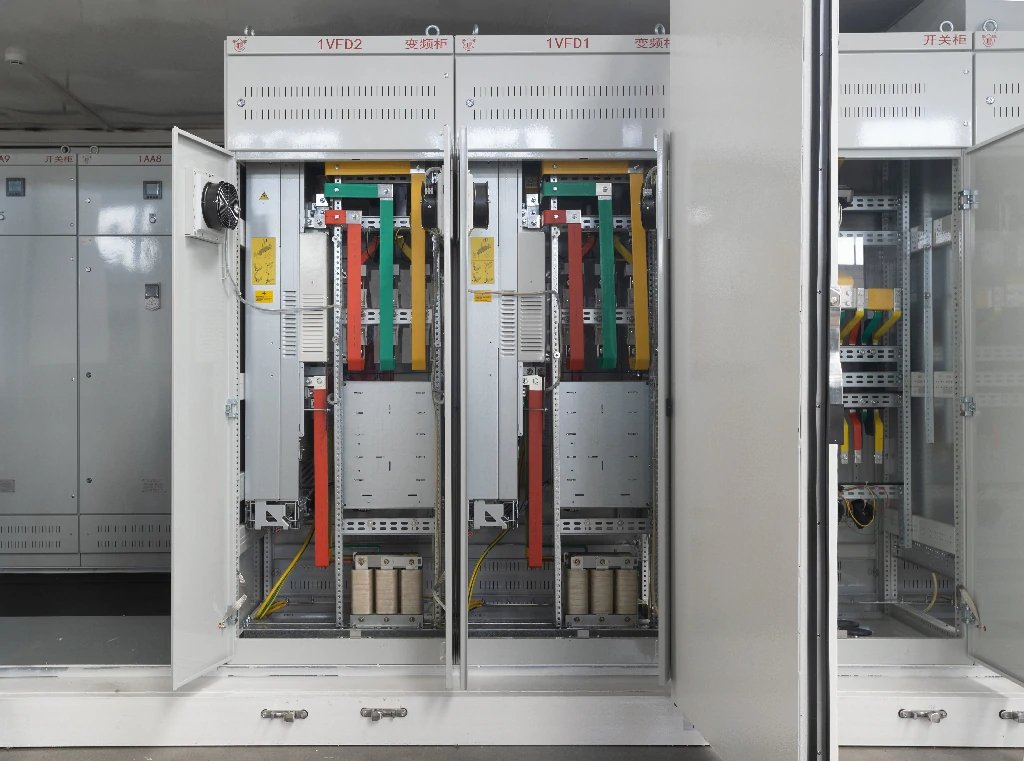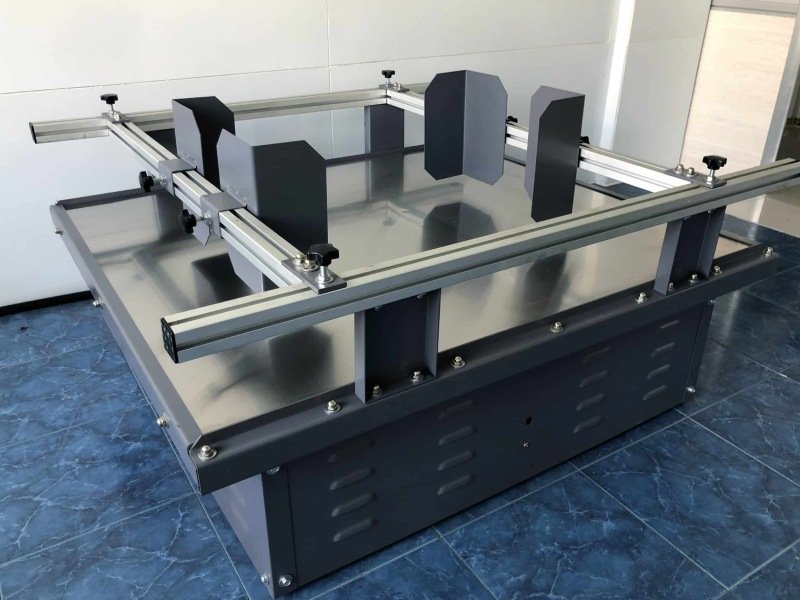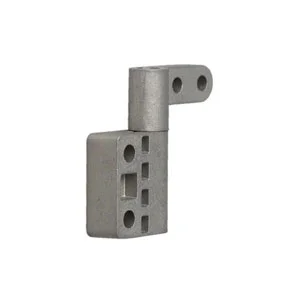Swing handle latches may not be the first thing that comes to mind when discussing industrial hardware, but these versatile components play a vital role in ensuring the security, functionality, and accessibility of enclosures, cabinets, and machinery. Whether you're an engineer, a facility manager, or someone interested in industrial design, understanding the purpose and applications of swing handle latches can provide valuable insights into their importance.
What Are Swing Handle Latches?

Swing handle latches are mechanical fastening devices designed to secure doors, panels, or enclosures. They derive their name from the distinctive "swinging" motion of the handle, which allows users to open or close the latch with ease. These latches are engineered for durability, ergonomic operation, and reliable performance in demanding environments.
Typically made from materials such as stainless steel, zinc alloy, or reinforced plastics, swing handle latches are built to withstand wear and tear while maintaining their functionality over time. Their design often incorporates locking mechanisms for added security, making them ideal for applications where restricted access is required.
Key Features of Swing Handle Latches
Swing handle latches offer a range of features that make them indispensable in industrial and commercial settings. Some of their standout characteristics include:
- Ergonomic Design: The swinging motion of the handle provides a user-friendly experience, allowing for smooth operation without excessive force.
- Security Options: Many swing handle latches come equipped with locking mechanisms, such as key locks or combination locks, to prevent unauthorized access.
- Durability: Constructed from high-quality materials, these latches are designed to resist corrosion, impact, and environmental stressors.
- Versatility: Swing handle latches are compatible with a wide range of enclosures and panels, making them suitable for various industries.
- Customization: Manufacturers often offer customizable options, including different finishes, sizes, and locking systems to meet specific requirements.
Applications of Swing Handle Latches
Swing handle latches are widely used across multiple industries due to their robust and adaptable design. Some common applications include:
1. Electrical Enclosures
In industries where electrical panels and control boxes need to be securely closed yet easily accessible for maintenance, swing handle latches provide the perfect solution. Their locking capabilities ensure safety by preventing accidental tampering.
2. Telecommunication Cabinets
Telecommunication equipment often requires protection from environmental factors and unauthorized access. Swing handle latches are frequently used in outdoor telecom cabinets to safeguard sensitive components.
3. Industrial Machinery
Machinery enclosures demand reliable latching mechanisms to keep moving parts secure during operation. Swing handle latches offer the durability and strength needed to meet these requirements.
4. Transportation and Automotive
From storage compartments in trucks to access panels in buses and trains, swing handle latches provide convenient and secure closure solutions for transportation applications.
5. HVAC Systems
Heating, ventilation, and air conditioning systems often feature panels that require periodic inspection and maintenance. Swing handle latches allow for easy access while maintaining a secure fit when not in use.
Benefits of Using Swing Handle Latches
The popularity of swing handle latches is no accident; their design offers numerous advantages that make them a preferred choice for many applications:
- Enhanced Security: With integrated locking systems, swing handle latches help protect valuable equipment and sensitive information from unauthorized access.
- Ease of Use: The ergonomic design ensures that users can operate the latch with minimal effort, even in challenging conditions.
- Long-Lasting Performance: Built to endure harsh environments, these latches require minimal maintenance while delivering consistent performance over time.
- Aesthetics and Professionalism: The sleek design of swing handle latches adds a polished look to enclosures and cabinets, enhancing their overall appearance.
- Flexibility: Their adaptability to various panel thicknesses and configurations makes swing handle latches a versatile choice for diverse applications.
Selecting the Right Swing Handle Latch
When choosing a swing handle latch for your specific needs, it's essential to consider several factors:
- Material: Select a material that suits the environment in which the latch will be used. For instance, stainless steel is ideal for corrosive or outdoor conditions.
- Locking Mechanism: Determine whether you need a latch with a key lock, combination lock, or no lock at all.
- Size and Fit: Ensure the latch is compatible with the dimensions of your enclosure or panel.
- Industry Standards: Check if the latch meets industry-specific certifications or standards for safety and performance.
- Aesthetic Preferences: Consider the finish and design of the latch to ensure it aligns with your project's visual requirements.
Swing handle latches are a versatile and reliable solution for securing doors, panels, and enclosures in various applications, including industrial cabinets, electrical enclosures, and storage units. Proper installation of these latches ensures functionality, durability, and safety. In this guide, we will walk you through the process of installing swing handle latches efficiently and correctly.
A Step-by-Step Guide to Installing Swing Handle Latches
Tools and Materials Needed
Before beginning the installation process, gather the necessary tools and materials to ensure a smooth workflow. Here is a checklist:
- Swing handle latch assembly (verify compatibility with your application)
- Screws or bolts (as specified by the latch manufacturer)
- Screwdriver or power drill
- Measuring tape
- Marking tool (e.g., pencil or marker)
- Wrench or spanner (if required for bolts)
- Safety gloves and goggles (optional but recommended)
Step 1: Understand the Components
Swing handle latches typically consist of the following components:
- Handle Assembly: The main component that swings open or closed to secure the latch.
- Locking Mechanism: May include a key lock, padlock provision, or tool-operated lock for added security.
- Mounting Plate or Base: The section that attaches to the door or panel.
- Cam or Latching Arm: The part that engages with the frame or strike plate to secure the door in place.
Familiarize yourself with these parts and refer to the manufacturer’s instructions for any specific details about your latch model.
Step 2: Measure and Mark the Installation Points
Accurate measurements are crucial for proper alignment and functionality. Follow these steps:
- Determine Placement: Identify where the swing handle latch will be installed on the door or panel. Ensure the location is accessible and aligns with the strike plate or frame.
- Mark Mounting Holes: Use a measuring tape and marking tool to mark the positions of the mounting holes on the surface. Refer to the manufacturer’s template or dimensions for accuracy.
- Check Alignment: Double-check that the marked points align with the strike plate or receiving end of the latch when closed.
Step 3: Drill Holes
Once you’ve marked the positions, proceed to drill holes for mounting:
- Select Drill Bit: Choose a drill bit that matches the size of the screws or bolts provided with the latch.
- Drill Carefully: Drill holes at the marked points, ensuring they are straight and clean. Avoid applying excessive force to prevent damage to the surface.
- Deburr Edges: If necessary, use a deburring tool or sandpaper to smooth out any rough edges around the drilled holes.
Step 4: Attach the Swing Handle Latch
With the holes prepared, it’s time to install the latch:
- Position the Latch: Align the swing handle latch with the drilled holes on the door or panel.
- Secure with Screws or Bolts: Insert screws or bolts through the mounting holes and tighten them using a screwdriver or wrench. Ensure they are snug but not overtightened, as this could damage the latch or surface.
- Install Cam or Latching Arm: Attach the cam or latching arm to the back of the handle assembly according to the manufacturer’s instructions. Adjust its position if necessary to ensure proper engagement with the strike plate.
Step 5: Test Functionality
After installation, test the swing handle latch to ensure it operates smoothly:
- Open and Close: Swing the handle open and closed several times to confirm that it moves freely without obstruction.
- Engage Locking Mechanism: If your latch includes a lock, test it to verify that it secures properly when engaged.
- Check Alignment: Ensure that the cam or latching arm aligns perfectly with the strike plate or frame when closed, providing a secure fit.
Step 6: Make Adjustments (if needed)
If you encounter any issues during testing, make adjustments as required:
- Reposition Cam: Loosen and adjust the cam or latching arm for better alignment with the strike plate.
- Tighten Fasteners: Check all screws or bolts to ensure they are properly tightened.
- Lubricate Moving Parts: Apply a small amount of lubricant to hinges or moving parts if necessary for smoother operation.
Maintenance Tips for Swing Handle Latches
To ensure long-term functionality and reliability, follow these maintenance tips:
- Inspect Regularly: Periodically check for loose screws, misalignment, or wear on components. Address any issues promptly.
- Keep Clean: Wipe down the latch with a clean cloth to remove dirt, dust, or debris that could affect performance.
- Lubricate as Needed: Apply a suitable lubricant to moving parts periodically to prevent rust and ensure smooth operation.
- Replace Damaged Components: If any part of the latch becomes damaged or worn out, replace it immediately to maintain security and functionality.
Conclusion
Swing handle latches may be small components, but their impact on industrial operations is significant. By combining security, durability, and ease of use, these latches provide a reliable solution for securing enclosures across various sectors. Whether you're upgrading an existing system or designing a new one from scratch, investing in high-quality swing handle latches can enhance both functionality and safety.
As industries continue to evolve, so too will the design and application of swing handle latches. Their enduring relevance is a testament to their innovative engineering and indispensable role in modern infrastructure.







